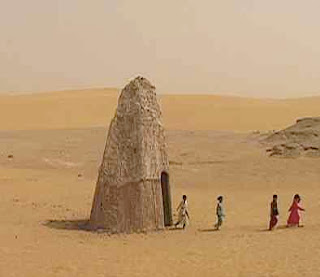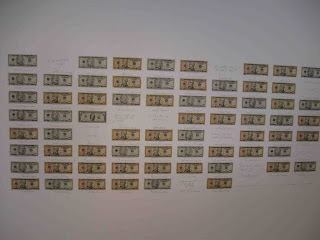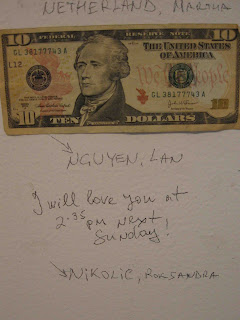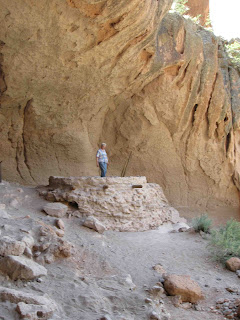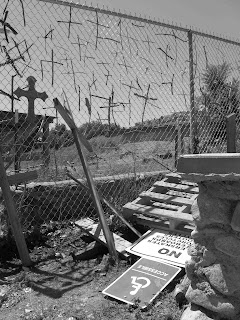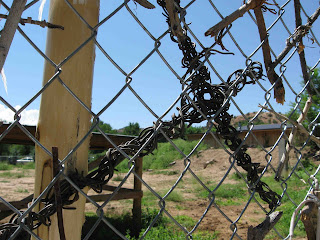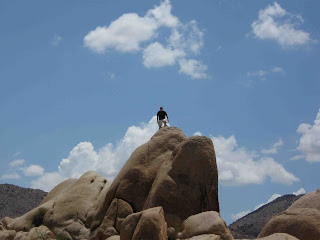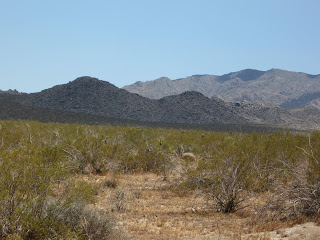 The best restaurant in Denver, Casa Bonita.
The best restaurant in Denver, Casa Bonita.After leaving New Mexico on Sunday, August 3rd, I drove North into Colorado, and got to hang out with some friends from the Glen. I decided that this would be a perfect opportunity to see the mythical restaurant, Casa Bonita, which I had originally seen depicted on South Park. When I first watch the episode, I couldn't believe that Casa Bonita was a real place, but now having been there, I can say that the episode is completely (and sadly) true to life.
Essentially, CB is a former department store that has been changed into the Disneyland of Mexican restaurants. Except the part that I assume most people like most about Disneyland, or any amusement park, (the rides), is missing. BUT, like Disneyland, Casa Bonita does have terrible, overpriced food, overdone decor, and vendors who will draw your caricature or sell you a glow in the dark bracelet. On the plus side, the food is all-you-can-eat—all that you have to do is raise the little Mexican flag at your table to the "up" position, and the server will appear immediately to inquire what you would like. After about two plates I just couldn't take any more enchiladas, but I did have a couple of sopaipillas.
CB is also known for its cliff divers, who do real dives off of a fake, 20-foot cliff. The funniest part, though, is that the cliff divers also double as Black Bart and The Sheriff and triple as Chiquita, the Incredible Gorilla, and Animal Trainer in the shows. This allows them to save money, since they only have to pay one set of performers. The writing of the shows could learn something from "B" movie scripts. Still, though, this place was PACKED, and I can only surmise that every child in Colorado has had at least one birthday at CB. It has incredible campy value.
 A testament to the quality of the establishment, here is an image of the cliff divers, taken from the CB website. It looks like their pictures came out about like mine did.
A testament to the quality of the establishment, here is an image of the cliff divers, taken from the CB website. It looks like their pictures came out about like mine did. Chiquita, the trained gorilla, likes Bermuda shorts and, (not pictured), Nikes. Image taken from CB website.
Chiquita, the trained gorilla, likes Bermuda shorts and, (not pictured), Nikes. Image taken from CB website. The fearful caves of CB.
The fearful caves of CB.On my way up to Denver, I stopped in San Luis, CO, which, I found out, it the oldest city in the state. The town is tiny, but there is a cool little Catholic church built at the top of a hill, and while ascending the hill, there is a stations of the cross shrine in bronze sculptures. It made for a good way to break up the driving.
 The chapel in San Luis, CO.
The chapel in San Luis, CO. One of the statues.
One of the statues.On Monday, I continued my drive North, going through Wyoming. I stopped at cool little cafe in Cheyenne, but ultimately I didn't get to do much there.
 This is what Wyoming looked like to me. Because it wasn't that interesting, I'll leave you with the Casa Bonita clip from South Park. I guarantee everything in the clip is real. Except maybe Cartman.
This is what Wyoming looked like to me. Because it wasn't that interesting, I'll leave you with the Casa Bonita clip from South Park. I guarantee everything in the clip is real. Except maybe Cartman.

